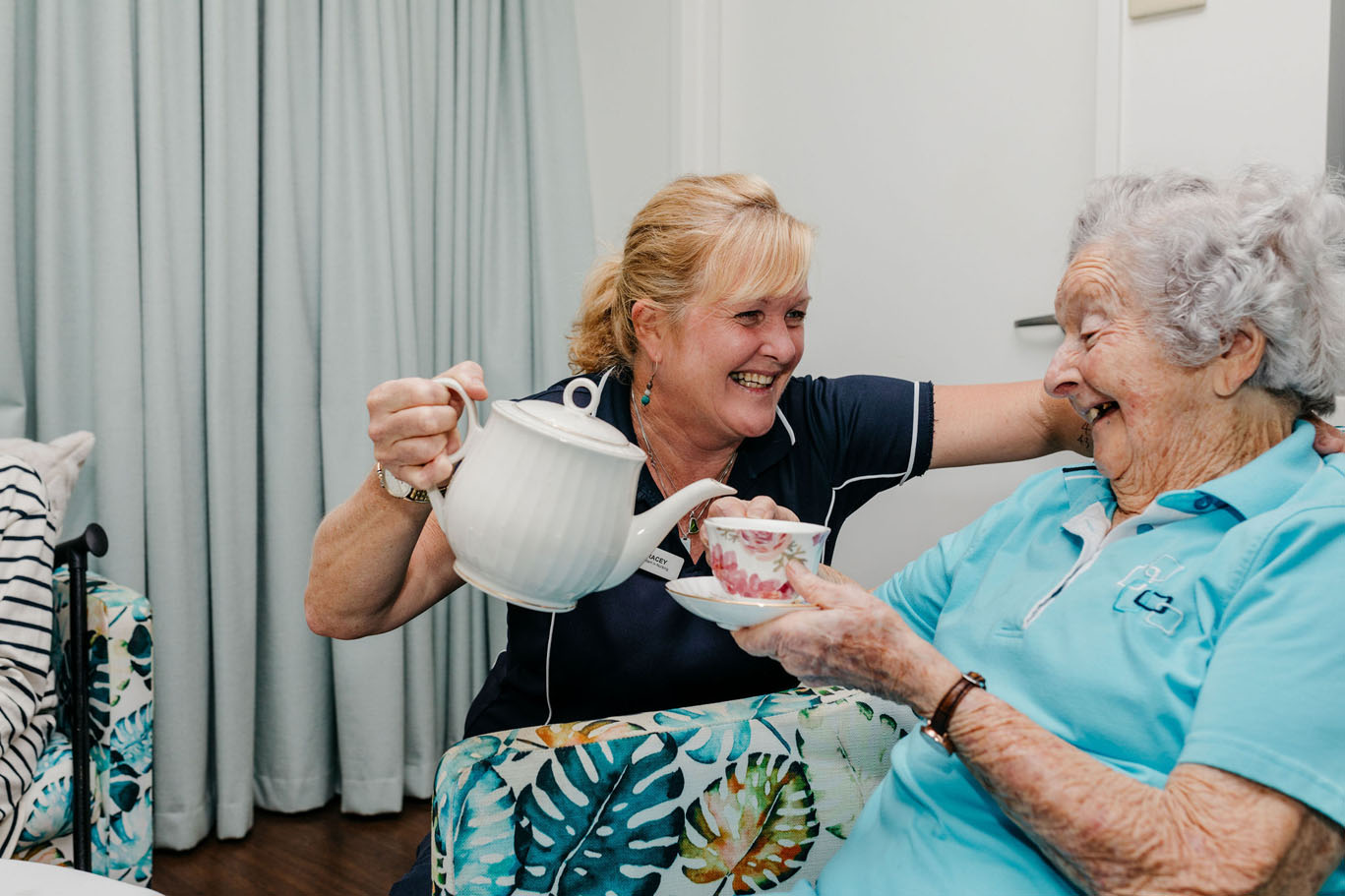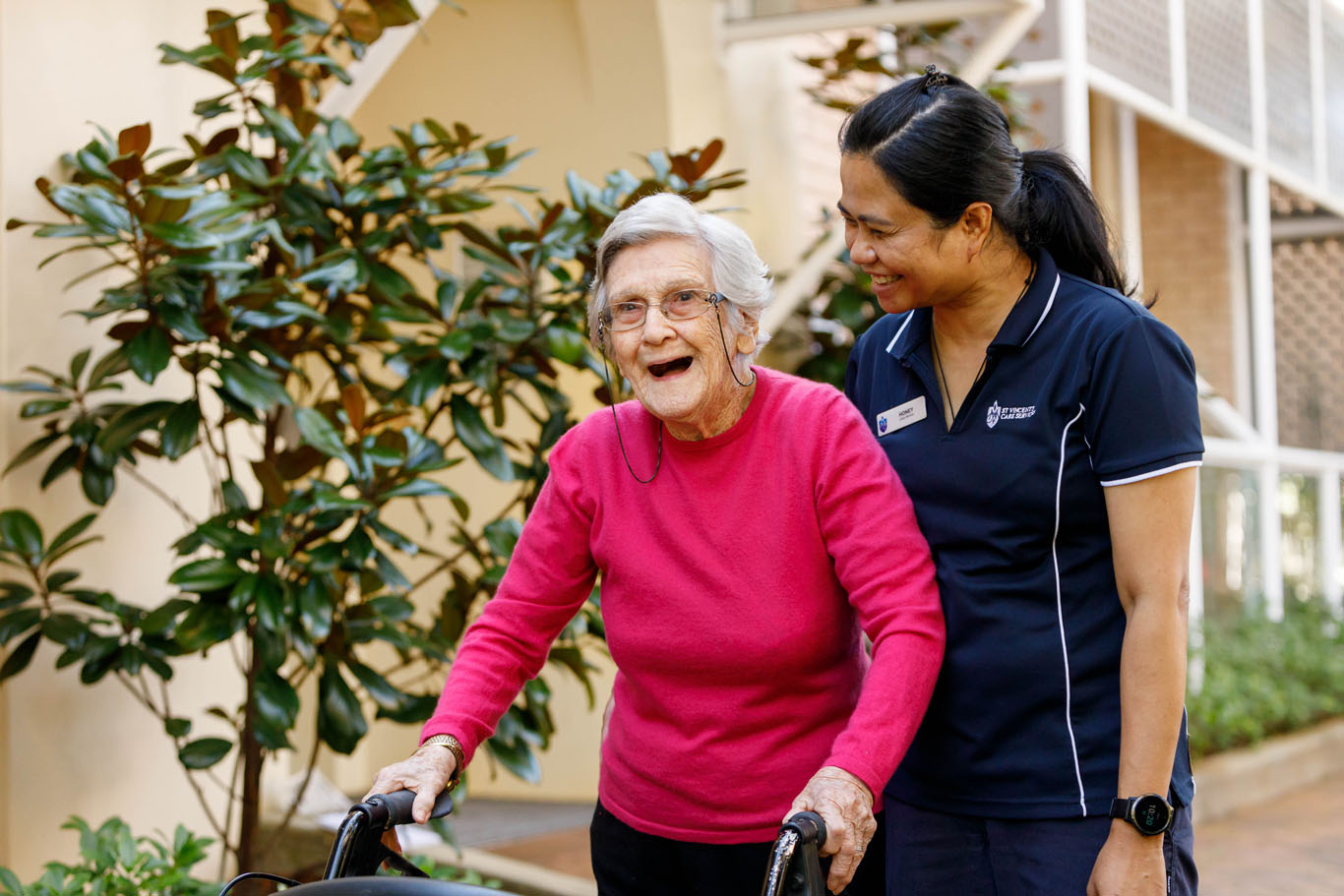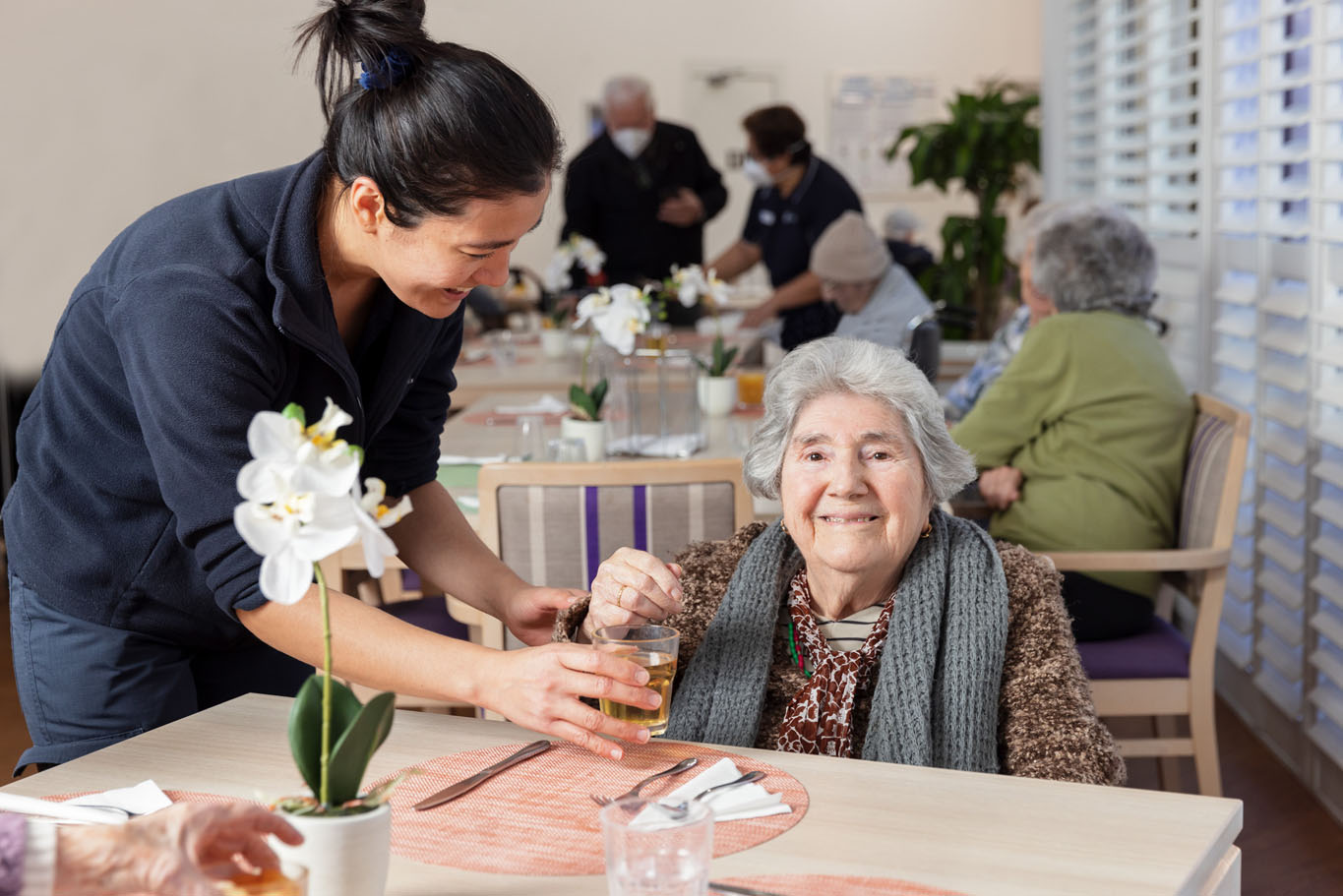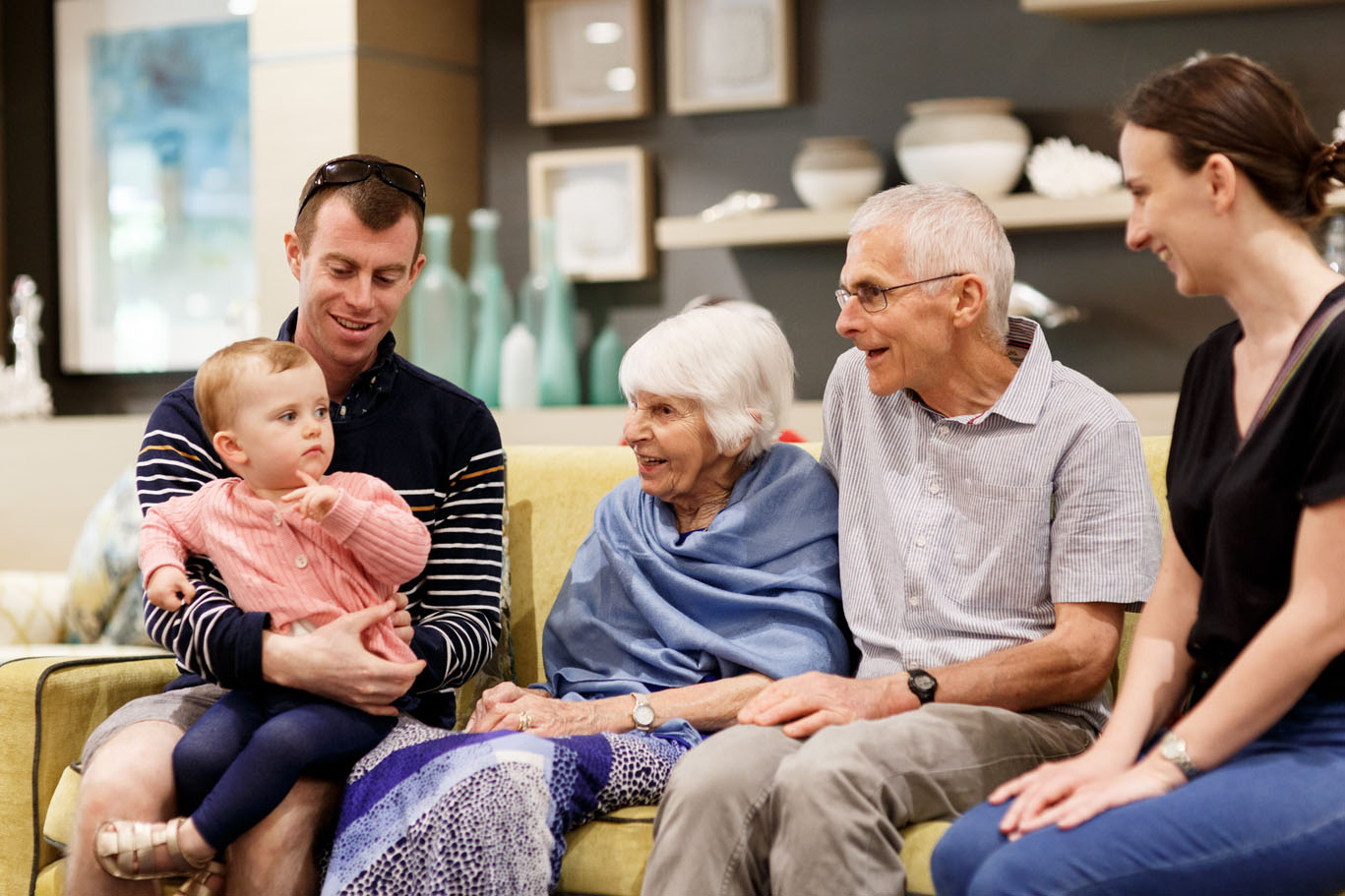A Day in the Life of a Residential Aged Care Worker
Posted 19th March 2024 | 5 minute read
Written by Jesse Gramenz 

Embarking Aged care workers (personal carers, support workers etc.) out of all the people that work in aged care engage with residents the most. But what does this look like on a day to day basis. And what can you expect when you're working in that job as a career. Let's find out.
What a shift for an aged care worker looks like in residential aged care
7:00 AM - Starting the Shift
When you first enter the aged care home, you'll need to sign in for work and get ready for the day.
This may include doing a RAT test for COVID-19 depending if there's been any risk of COVID in the aged care home recently.
After this, the first part of the shift is spent listening to a handover from the Registered Nurse on duty from the night before, updating any overnight changes, and setting the day's priorities.
What's a handover in aged care? A handover in aged care is 'handing over' the responsibility and care of residents over to the next person taking over your shift. That means giving them any important detail about residents (clinical or otherwise) that the next person needs to be able to deliver care the best way they can. |
This is a really important part of the day. A good handover and prioritization mean that you can feel confident in the things that have happened the night before and have a planned day ahead.
After you've arrived at work, signed in and gone through a handover, it's time to help residents get started for the day.
Read on:
7:30 AM - Personal Care Assistance
It’s time to assist residents with their morning routines. What does that look like? Well, let's have a look.
Personal care assistance for aged care residents can include:
- Helping them go to the toilet
- Assisting them to have a shower
- Picking out their clothes for the day with them and helping them get dressed
- Combing their hair
- Brushing their teeth
- Giving them a fresh shave for the day
- Popping in their hearing aids
- Helping them with their morning medication
- Do any wound care they need like replacing bandages
- Tidying their room
- Making their bed
No two residents are the same and while one resident might need help with one or two things from this list, some higher needs residents might need more.
There will also be residents who are pretty independent and may only need one or two things from the list above. That's what makes aged care fun and unique -- no two people are the same.
Paperwork is really important in aged care and an aged care worker will document any changes for resident care when there are quieter moments throughout the day.
After residents are fresh and ready for the day, it's time for breakfast.
 Working in aged care often means forming a close bond and friendship with the people you care for
Working in aged care often means forming a close bond and friendship with the people you care for
8:00am - Breakfast time
During breakfast, an aged care worker's day begins with ensuring each resident is comfortably and safely escorted to the dining area.
In detail, this involves:
- Helping residents get to the dining room. This could mean pushing them in their wheelchair or just holding onto their arm to give them a helping hand.
- Keeping an eye out an residents and making sure they have everything they need,
- Making sure residents are eating ok, without any issues and that they're getting the right food for their diet and preferences
- Also noting if residents are eating any more or less than usual
BUT, it's not all about just getting residents to the dining room, making clinical observations and ticking the boxes.
Did you know: A great meal in aged care is like a big party. Good atmosphere. Smiling faces. And the enthusiasm and joy an aged care worker brings to work everyday can change the lives and outlook of aged care residents (and other staff too!) |
After breakfast, aged care workers help to clear up and ensure that residents are comfortable and ready for the day ahead. This could involve taking residents to the toilet after breakfast, participating in activities, attending appointments, or helping residents to simply relax. Overall, aged care workers facilitate a smooth transition into the day's activities.
Bonus 🌟: Some beautiful moments you might experience throughout the day as an aged care worker:
- Getting the chance to sing and say goodbye to someone you've grown to love
- A resident holding your arm as you take them to breakfast
- Finishing the day feeling glad that you've made a difference in someone's life
- Residents, fellow staff, families appreciating what you do -- you can't say the same about every job!
10:00 AM Tea break & morning tea
It's time for morning tea for residents, but it's also time for a tea break aged care workers too!
In aged care, you can have a paid 10 minute tea break for every 4 hour period you work. This is different to a lunch break.
Grab a tea or coffee and maybe some cake from the staff room. With the amount of parties and morning teas in aged care there's normally something left over you can have.
11:00 AM - Health Monitoring and other personal care
Midmorning involves health checks such as monitoring vital signs, distributing medications as prescribed, and documenting any health concerns to report to the nursing staff.
At this time, there'll still be residents that need to be checked in on for any other personal care that they might need.
This could include some more wound management, giving mid-morning medications (particularly medication they can only have after a meal) and visiting any other residents who maybe didn't need a visit earlier in the morning.
12:00 PM - Lunch time
Like breakfast, lunch can get really busy. Because mealtimes are the busiest time during the day, aged care workers will often have a lunch break before or after lunchtime in aged care.
 Mealtimes can be the most meaningful times of the day for aged care residents -- take your time and do it right!
Mealtimes can be the most meaningful times of the day for aged care residents -- take your time and do it right!
We've already talked about breakfast, but here are a few more things that aged care workers consider at meal times.
- Giving residents plenty of time to eat and enjoy their food
- Being present in the moment with residents at mealtime for conversations and assistance where it's needed
- Check if residents are comfortable dining with others or if they want to dine alone
- Making sure chairs are at a comfortable height for residents
- Ensuring residents get the meals that they ask for and that they're able to eat their meal properly
- Explaining to residents what their meal is (if it's been texture modified ie. mashed or pureed)
Lunchtime is an excellent chance for residents and staff to connect with each other. The best mealtimes are well staffed, with a great atmosphere (without being too noisy) and don't feel rushed or forced.
| Remember: Sitting down for a cup of tea or joining in on an activity with residents can be as important as giving them their insulin or medication. Being an aged care worker isn't just about keeping residents healthy and safe, it's about making them feel welcome and connected too 😊 Does being an aged care worker sound like the job for you? Check out some of our aged care job vacancies in Sydney. |
1:00 PM - Leisure and Activities
After lunch, it's time for the fun stuff.
In aged care there many, many things residents can do to spend their time and often a lot of this happens during the afternoon. Breakfast is hectic. Lunch can be a little crazy. But now is typically peak time for lifestyle coordinators in organising activities that residents can enjoy.
As an aged care worker, you're either helping out with residents in their activities or you're helping out other residents with their care.
Some activities residents can do in the afternoon include:
- Afternoon movies
- Indoor bowls
- Listening to music in a group
- Group exercise
- Word games
- Board and card games
- Bus outings and lunches
- Live concerts from performers (there's a lot of Elvis impersonators around)
- ...and a lot more!
But it's not all about what the residents can get up to... |
Activities are typically happening throughout the day, but it's usually the afternoons (when families are visiting too) that activities are at their most popular.
1:30 Lunch break
An aged care worker can take an unpaid lunch break (usually 30 minutes) that is a scheduled time at some point during the day.
This will depend on the type of shift you're working, when lunch and breakfast times are and what time you've agreed to take your break with your manager or roster coordinator.
This is really important, because if lunch breaks aren't rostered properly you could have half the team on the break when residents might need support.
2:00 - Afternoon Tea
Exactly like morning tea, residents will get their choice of a light afternoon refreshment.
Aged care workers also get the opportunity to take their second tea break around this time as well.
2:30 PM - Administrative Duties
Mid-afternoon is often allocated for updating care plans, liaising with family members, and coordinating with other healthcare professionals to ensure holistic care.
An afternoon as an aged care worker can include:
- Chatting with family coming to visit (this normally happens after lunch when it's less busy)
- Taking residents to appointments or group activities like physiotherapy and exercise classes
- Attending to residents who need personal care in the afternoon including shifting residents who are bed-bound
- Catching up on paperwork from earlier in the day
 Spending time with a resident's family can be a great opportunity to build stronger relationships with residents too
Spending time with a resident's family can be a great opportunity to build stronger relationships with residents too
3:00 PM - End of the shift
And that's it! The end of your shift.
Just like at the start of your shift, you'll be involved in handover to the next person who's working in your place. If you're not doing the handover directly, then the Registered Nurse (RN) in charge will take the responsibility for that.
Shifts will normally run 8 hours at a time, so the next two shifts that you could work as an aged care worker would be from 3pm to 11pm and from 11pm to 7am.
One of the great things about working in aged care is the flexibility. You can work part time, full time, casually and when you work weekends and nights you get the chance to earn even more money!
Parting thoughts
Being an aged care worker is a busy job, but it's also incredibly rewarding. By spending time with aged care residents, you'll be making a genuine difference in the lives of older people and doing it with people who are equally as passionate about the work they're doing too.
If you're interested in a career in aged care, check out our careers page for more information on how you can get started.
- Home
Helpful Information

How Much Can I Make Working in Aged Care? [2024]

An Entry-Level Guide to Aged Care Certifications and Training in Australia
